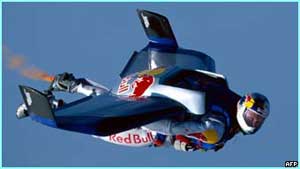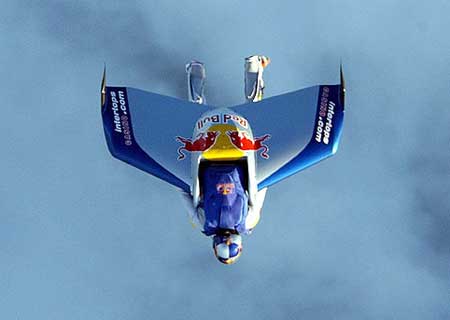A German company has organized the production of new equipment for paratroopers that could significantly change the tactics of conducting covert operations using airborne troops. The lightweight personal wing will allow paratroopers to fly over great distances after exiting the aircraft.
 |
| Felix Baumgartner’s test flight in 2003. (Photo: BBC) |
The aerodynamic properties of the wing enable soldiers to land up to 60 kilometers away from their deployment location when exiting an aircraft at an altitude of 10 kilometers. This offers a significant advantage over traditional parachuting methods, as during covert operations, the aircraft can drop troops without needing to approach the enemy’s area, simply deploying the special forces outside the enemy’s radar coverage. The paratroopers will then fly to the landing zone, while radar systems are nearly incapable of detecting such small targets. Before landing, the soldier deploys the parachute and lands normally.
The first demonstration of the personal wing’s capabilities took place in 2003. At that time, Austrian professional skydiver Felix Baumgartner flew across the English Channel. He jumped from an aircraft at an altitude of 10 kilometers over the area of Duvres, landing in the region of Calais 12 minutes later. According to the Daily Mail, the average flight speed of the wing is approximately 352 km/h.
This troop deployment technique has several advantages over conventional methods. With regular parachutes, troops can also be dropped from great distances, but deploying the parachute at high altitudes presents many challenges in maneuvering the chute. Additionally, the descent speed is not high, and the accuracy of the landing point is low. If using free-fall techniques, where the jumper only opens the parachute at the last moment, the horizontal movement distance before opening the parachute is significantly reduced.
Currently, the German company ESG, after conducting numerous tests, has completed the design for mass production of the wings for paratroopers. The wings have a span of 1.8 meters and are made from carbon fiber. The maximum horizontal flight speed is 200 km/h. With this equipment, the accuracy, distance, and speed of troop deployment are greatly enhanced.
It is certain that the British military will conduct tests of their own, and it is possible that the UK Ministry of Defence will equip special forces units with this new technology.


Hoàng Thương


















































